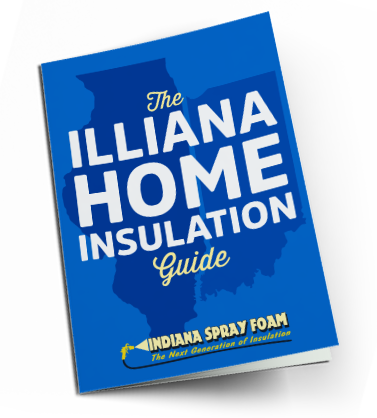Spray Foam FAQ
Spray foam insulation is an alternative to traditional fiber insulation. It provides extra protection from drafts and helps to save on energy costs within a home with increased temperature control. Learn more.
The spray foam we use in your home is essentially made of the same material as the foam cup you grab at the local gas station. It is a cellular plastic where water is used as the blowing agent, and is non-toxic.
Yes, there is a larger investment. However, we have found that most of our customers are paid back the difference within 3 to 5 years through energy savings.
Spray foam insulation’s air sealing properties are the primary reason for its superiority over fiberglass. Fiberglass, no matter how well it is installed, does not provide an air barrier and allows air to move through it. This allows the two climates (inside, conditioned air and outside, unconditioned air) to combine and create potential condensation inside walls and building assemblies.
No. Spray foam insulation is applied to the underside of the roof deck, raising the insulation plane from the ceiling to the roof deck. This creates a conditioned space in the attic area.
Yes. Spray foam has more density than fiberglass and its physical properties attenuate sound more effectively. Note: It is very difficult to predict how much sound will be reduced unless a specific sound wall assembly is designed (i.e. staggered stud, etc.).
Both open-cell and closed-cell foam are great insulators. Both provide an excellent thermal barrier and air barrier. How they differ is that closed-cell foam is waterproof and will not let water move through it. Open-cell foam will allow water to move through it and dry. Insulation should not stop water. Roof, wall and crawl space assemblies are designed to keep water out. If water somehow does get into those assemblies, it needs to be able to dry out, especially in wood structures.
Spray Foam insulation can be used anywhere in the home, the same as traditional insulation. Spray Foam insulation is ideal for hard to insulate areas because it spreads to fully insulate the area. These hard to insulate areas can include, but are not limited to:
- Attics
- Cathedral Ceilings
- Basements
- Walls
- Crawl Spaces
- Rim Joists
New Construction FAQ
You install spray foam at the same time as the traditional fiberglass insulation, after passing mechanical and framing inspections, yet before hanging sheetrock.

Free Guide To
Home Insulation
Learn about retrofitting existing homes with foam insulation.
Need to get a free quote?
Indiana Spray Foam services Chicagoland • Northwest Indiana • Central Indiana
